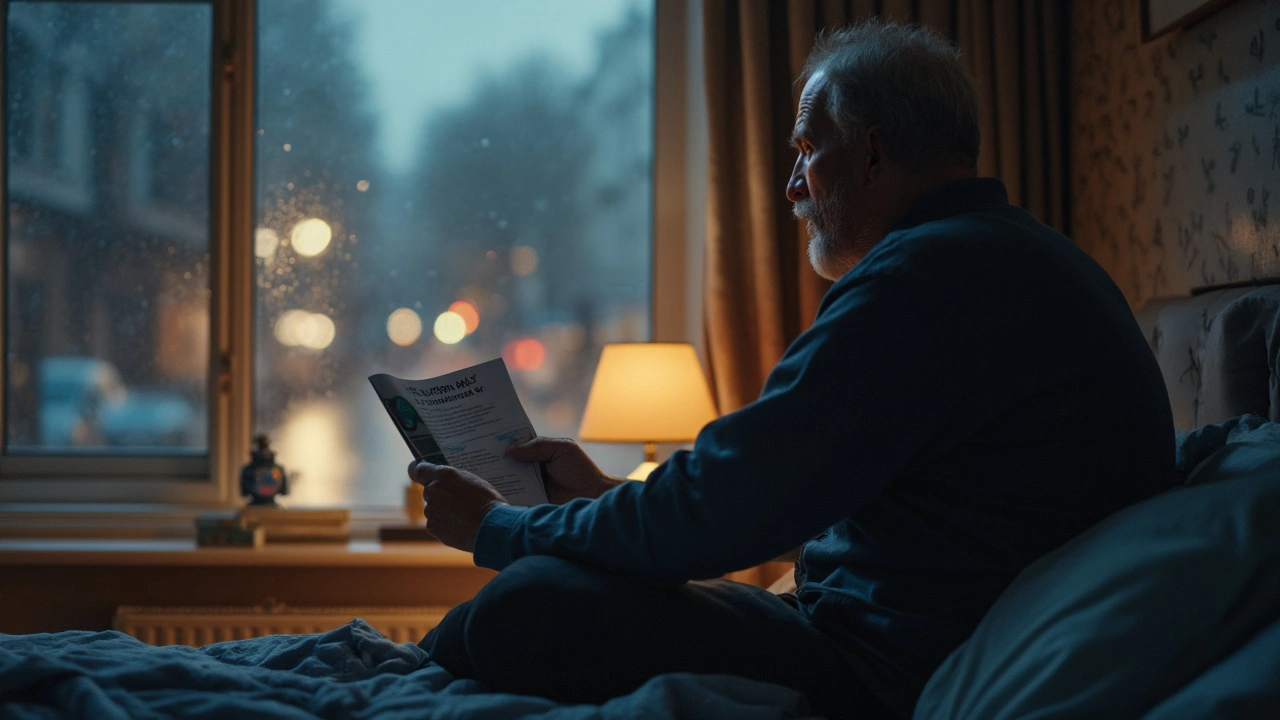Enlarged Prostate (BPH) — What to Watch For and What Works
If you’re dealing with slow urine flow, waking at night to pee, or feeling like your bladder never fully empties, an enlarged prostate (benign prostatic hyperplasia or BPH) could be the reason. It’s common as men get older — roughly half of men in their 50s and more in later decades notice symptoms. The good news: many options can reduce symptoms and make life easier.
How doctors check for it
Your doctor will start with questions about symptoms and a physical exam. Expect a digital rectal exam to feel the prostate size and a urine test to rule out infection. Many clinicians also check PSA (a blood marker) to screen for prostate cancer risks, and they may recommend uroflowmetry or bladder ultrasound if symptoms are severe. These tests help match treatment to how much the prostate is affecting your bladder.
Simple changes that help right away
Small habits often cut symptoms a lot. Try cutting back on caffeine and alcohol, especially in the evening. Drink smaller amounts closer to bedtime and set a timed-void schedule (go to the bathroom every 3–4 hours even if you don’t feel urgent). Pelvic floor exercises can improve bladder control for some men. If nighttime trips are the main issue, avoid drinking two hours before bed.
When lifestyle changes aren’t enough, medications are the next step. Alpha blockers like tamsulosin relax the prostate and bladder neck to improve flow — they often work fast. 5-alpha-reductase inhibitors such as finasteride shrink the prostate over months and lower long-term risk of needing surgery. Sometimes doctors use both together for tougher cases. Each drug class has side effects, so talk specifics with your clinician.
For men who don’t respond to meds or have complications (like urinary retention or recurring infections), procedures are available. Traditional surgery like TURP removes excess tissue and gives lasting relief. Less invasive options — laser procedures, UroLift, or steam therapy — can shorten recovery time and suit men who want to avoid major surgery. Your age, prostate size, and overall health help decide the best option.
Watch for warning signs: sudden inability to urinate, fever with urinary symptoms, blood in urine, or severe pain. Those need same-day care. If your symptoms are manageable, ask your doctor about symptom scores and follow-up plans — BPH often progresses slowly, so regular checks make sense.
If you want more details on specific drugs like tamsulosin, or on testing and procedure choices, our site has practical articles that compare options and share safety tips. Don’t guess—talk with your healthcare provider to find what fits your body and lifestyle.

